Nutrition for Parkinson’s Disease has four components: What to Eat, What Not to Eat, Useful supplements and How to Eat, given symptoms of the disease. This will be a four piece series. Some of it is basic: the foods and superfoods that enrich the diet. Some is specific to the typical complaints from either the disease, the medications and the often restrictive lifestyles that PD patients often adopt. And the how-to acknowledges that the disease creates some physical problems that adaptive devices might help.
Nutrition for Parkinson’s Disease Part 1: What to Eat
People with Parkinson’s have some extra requirements in their diet. Because shaking can burn calories, it is easy to become underweight, although that is not universal. Yin deficiency, a kind of dehydration or wasting, is generally seen in symptoms like shaking, muscle spasms, constipation, poorly nourished muscles and skin, as well as dehydration. Blood deficiency can be seen with pale skin, lips and tongue as well as with muscle wasting. While we have limited knowledge of what causes the substantia nigra to stop making dopamine, it is likely that missing nutrients will be implicated in both the production of dopamine and the preservation of brain cells. People with Parkinson’s often suffer from constipation and muscle spasms. So what should you eat?
- Berries and other fruits- While people with Parkinson’s who are not overweight can eat fruit rather freely, it is best to deal with nutrient-dense berries. Blueberries, huckleberries, goji berries, blackberries, raspberries, organic strawberries, pomegranates, and cherries all pack a deeper nutritional punch than apples, pears and bananas. All are useful, but especially the berries which are rich sources of flavonoids. Blueberries and organic strawberries can reduce depression, improve memory and slow neuro-degeneration. Goji berries are especially high in antioxidants and can build blood. Cranberries may protect the urinary tract. Tart cherries can help insomnia with their melatonin. Berries can pack in the nutrition especially as swallowing becomes more difficult. Go for organic, especially with strawberries and other berries because chemicals in pesticides can be linked to Parkinson’s. All fruits provide fiber which can counteract constipation. 1/2-1 cup daily.
- Purine-rich foods which break down too uric acid and then urates: The chemical urate, a potent antioxidant which is known to cause gout in excess, appears to slow the progression of Parkinson’s disease. Foods that make uric acid include: fructose, asparagus, beer, heart, herring,mussels,yeast, smelt, sardines, and sweetbreads. Just don’t overdo it, especially if you are prone to gout or insulin resistance. A serving a day, but take it in the evening if you are on Levodopa or Carbodopa.
- Fatty fish or fish oil including halibut, sardines, wild Alaskan salmon, anchovies and herring are rich in the DHA and EPA, Omega 3 fatty acids which go to the brain and help guard against dementia which affects some 40% of people with Parkinson’s. Fish oil improves cognition, protects against depression, boosts the immune system,relieves arthritis and protects the heart. I do not find flax oil as effective as fish or cod liver oil- it can require 30 times the dose, goes rancid very rapidly and some 30% of the population cannot convert it to DHA. (DHA makes up 20% of grey matter in the brain.) If you eat fish, eat the skin and check Seafood Watch to make sure that mercury levels are low. Beef that is 100% pasture-raised on grass has a fat profile similar to deep water fish but conventionally grain-raised CAFO beef does not. Otherwise get cod liver or fish oil and take enough to get 1000 mg of DHA. Since that can be 5 capsules, I generally get Carlson’s lemon-flavored fish oil or Green Pasture’s cinnamon fermented cod liver oil and use it to wash down supplements.
- Iron is linked to dopamine production. Patients with Parkinson’s have lower levels of dopamine produced by the substantia nigra and may respond to iron administration. Iron, as a cofactor in dopamine production, plays a central role in the etiology of the disease. Low dopamine can cause other neurological problems such as restless leg syndrome and muscle spasms. Judging from the Parkinson’s people I see, Blood Deficiency is pretty widespread. I recommend pasture-raised organic red meat, liver once a week,and dark green and dark red vegetables. (Chlorophyll is hemoglobin with magnesium at the center instead of iron, but usually has non-heme iron as well.) To increase iron absorption, tincture of Yellow dock (Rumex crispus) given in drop doses to stomach tolerance, can be helpful. However taking iron as a supplement can be ineffective (hard to absorb), hard on your heart or absorbed by bad gut flora. Dr.Campbell-McBride advises against it :
Most people with abnormal gut flora have various stages of anemia. It is not surprising. They not only can’t absorb essential for blood vitamins and minerals from food, but their own production of these vitamins is damaged. On top of that people with damaged gut flora often have a particular group of pathogenic bacteria growing in their gut, which are iron-loving bacteria (Actinomyces spp., Mycobacterium spp., pathogenic strains of E. coli, Corynebacterium spp., and many others). They consume whatever iron the person gets from the diet, leaving that person deficient in iron. Unfortunately, supplementing iron makes these bacteria grow stronger and does not remedy anemia.” (Gut & Psychology Syndrome)
- Probiotic Foods help you develop good gut flora that can out-compete undesirable bacteria and to increase digestion. Live blue cheese, yogurt, kefir, sauerkraut, kimchee, vinegar with a mother like Braggs, kombucha, unpasturized pickles and olives, miso, fermented fish sauces and pickled vegetables should be taken at each major meal. Pickles and pickle juice helps the body free up magnesium which can reduce cramps. Other bacteria help absorb minerals. I prefer food-based sources of probiotics because you eat them fresh, they come with their own prebiotics which feed them and tend to have a variety of organisms that may not be in pill form. For instance, most probiotic pills only have lactobacillus or bifidobacteria but there may be another 500 species that are present in a healthy gut. If you do use probiotic supplements, look for them in a refrigerated case rather than a shelf.
- Prebiotic foods feed the gut flora and can protect against iron depleting strains of bacteria. Prebiotics like fructooligosaccharide (FOS) and inulin feed the probiotic organisms and allow them to proliferate in the gut. They ought to be in probiotic supplements to help keep them alive. However your gut also needs to be receptive to them. Rather than purchasing a prebiotic supplement, eat a serving of Jerusalem artichokes, asparagus, onions, leeks, burdock root, garlic (in quantity), shallots, jicama root, chicory or dandelion root, barley or yacón each day.
- Nuts from trees are great sources of Vitamin E in its various forms and trace minerals, as well as good fats provided you eat them raw. Roasting can easily change the fat profile and excessive conventional salt triggers indiscriminate consumption. You will absorb nut nutrients better if you soak them overnight- you can puree them into nut butter with a little sea salt, toss them into salad or a stir fry or make your own nut milks. They are storehouses of important trace minerals: Brazil nuts are high in selenium which can help the heart. Peanuts which are ground nuts are significantly contaminated with aflatoxin, a known carcinogen that is twenty times more toxic than DDT. Since toxins can cause some Parkinson’s, avoid peanuts. 1 oz . per day of tree nuts.
- Beans in general are good for Parkinson’s because the fiber levels are high enough to prevent constipation while providing protein, reducing blood sugar spikes and providing protection from cancer. They can be consumed daily with herbs like rosemary or bay leaf to reduce flatulence and making them yourself will allow you to change the water enough to reduce that problem. But there are two beans in particular which provide special protection against Parkinson’s: fava beans and mucuna beans. These beans contain levodopa, the same chemical in Sinemet, Madopar, Dopar, Larodopa, and other levodopa-containing medicines used to treat PD which means that adding them to a well-balanced prescription can be problematic, although they can sometimes substitute for all or part of a prescription. According to Dr. Jame’s Duke’s database the entire fava plant, including leaves, stems, pods, and immature beans, contains levodopa, with the highest concentrations in the flowers and sprouting bean. The amount of levodopa can vary greatly, depending on the species of fava and where it’s grown especially since it has been cultivated as a food rather than a medicine for most of its history. Three ounces (about 84 grams or ½ cup every day) of fresh green fava beans, or three ounces of canned green fava beans, drained, may contain about 50-100 mg of levodopa. One small study showed that mucuna had better results than the form of levodopa given as prescription medication and anecdotal evidence shows it tends to work better than fava beans. Doses range from 22.5 – 67.5 g per day divided in 2 – 5 doses. Neither bean should be taken by persons with Monoamine oxidase inhibitors (MAOI) or elevations in blood pressure may result. If you have favism, a genetic susceptibility where you lack an enzyme called glucose-6-phosphate, eating fava beans could cause a condition called hemolytic anemia. This is ruled out by a test but it is unknown if mucuna also causes this reaction. Lacking either MAOIs or Favism, both beans are potentially good for people with Parkinson’s who work with an herbalist and medical doctor.
- Cruciferous Vegetables like broccoli, cauliflower, cabbage, kale, bok choi, kohlrabi, brussels sprouts and mustard, rutabaga and turnip greens help reduce estrogen dominance which reduces magnesium and vitamin B. A deficiency in magnesium causes muscle tightening and that causes people to experience muscle spasms while deficiency in vitamin B can cause neurological problems like neuropathy. Cruciferous vegetables are rich in zinc, vitamins A, B, C, D and E and Indole-3-Carbinol (I3C) which is especially beneficial to estrogen metabolism. When I3C combines with stomach acid it creates 3,3-Diindolylmethane, or DIM. The metabolism of DIM overlaps with estrogen metabolism so that it promotes healthy estrogen metabolism. Eat 2-4 servings daily within your 9 servings of veggies and berries. They should be steamed or in the case of kale chips, dried with heat to protect the thyroid.
- Coffee and Tea. Coffee has shown to be helpful at both preventing and slowing the progression of Parkinson’s disease in a dose-dependent way. Coffee consumption is associated with 60% fewer cases of Parkinson’s Disease in one study. Caffeinated coffee is better than decaf and coffee reduces symptoms better than other sources of caffeine, indicating that caffeine alone may not be the protective mechanism. (Coffee is much more than caffeine, with magnesium and potent antioxidants like the chlorogenic acids.) Caffeine as an isolate incidentally was associated with better motor control but had very little effect on daytime sleepiness. One caveat: some people don’t do well on coffee and tend to self-select out of the positive scientific studies (try making a coffee placebo!) Follow your own body. Tea has general health benefits from catechins which are powerful antioxidants and at least one study showed a reduced risk of Parkinson’s disease. There is some evidence that symptoms may be reduced with tea drinking, especially in studies of Asian populations.
- Other Fluids: Since dehydration is a problem, you need to drink. Drinking more than a half cup at a time triggers the urinary reflex so does not hydrate your tissues. So put your water in a bottle with a drink-through cap and sip it through the day. If you drink coffee or soda, assume that the caffeine will reduce hydration by 25% and tea or iced tea by 10%. Don’t drink soda though, especially cola or artificially sweetened soda which contains potential toxins not known to be safe for Parkinson’s. If water seems too plain, add a spear of melon and a sprig of mint, or sliced lemons or fresh rosemary and orange slices. Coconut water has a good balance of electrolytes and isn’t too sweet. You can also get fluids from fruits like watermelon or citrus. But if you can get fresh vegetable juice with lots of greens, it would be better from a nutritional standpoint. Don’t forget good fats- think of oil floating on water to prevent evaporation.
- Yin building herbs and foods: Parkinson’s disease can be dehydrating, drying out skin, muscles, the colon and joints. This is referred to as yin deficiency and can develop into deficient (friction) heat as it progresses. You need to nourish your fluids and tissues and there are a number of “Chinese grocery store” or food grade herbs and foods that can help. Seaweeds should be included in the diet at least twice a week, but dulse, nori and kelp are also available as sprinkles that can be used like a flavored salt inbetween. Seaweeds are good sources of trace minerals and iodine, since much of our healthy topsoil has blown out to sea. A table spoon or two of slippery elm or marshmallow powder can be stirred into applesauce or oatmeal. Mai men dong bulbs (opiophogon, liorope) are small, bland Chinese vegetables that nourish yin, go well in even western soup and can be found at Chinese grocery stores. So can white lily bulb (bai wei), broken into small bulblettes. Shatavari (asparagus tuber, tian men dong), the yin adaptogen food can be found online powdered, and can be used to thicken soups while nourishing fluids, hormones and tissues. Oatmeal, millet, alfalfa sprouts, artichoke, asparagus, kelp, mung bean sprouts, okra; peas, potatoes, black beans, avocado, aduki beans, seaweed, string beans, sweet potatoes, tomatoes (especially tomato paste), water chestnuts, yam, zucchini, berries, apricots, pears, watermelon, fish and shellfish, pork (especially liver and kidneys), beef, goose and duck, coconut milk and nuts all will help keep you supple. 9 servings of yin-tonifying fruits and vegetables a day.
- Foods with B vitamins, especially B1 thiamine, B5 pantothenic acid, B9 folate, B12 cobalamin, B6 pyrodoxine help the mitochondria which power our cells . Foods high in B vitamins include purple and green kale, mushrooms, bok choy, collards, rare organ meats like liver, heart and tongue, and very rare muscle meat. Meats are better sources when organic and grass fed. However if you can’t find grass fed liver, the organ has numerous detoxification pathways so you are safe with conventional liver- akin to an apartment building with a full janitorial staff. This is not true of other organs.
- Iodine is important for Parkinson’s. It not only necessary for the production of thyroid hormone, it is also responsible for the production of all of the other hormones of the body. Adequate iodine levels are necessary for proper immune system function. Iodine contains potent antibacterial, antiparasitic, antiviral, and anticancer properties. Iodine deficiency disorder can result in mental retardation, goiter, increased child and infant mortality, infertility, and socioeconomic decline. There is evidence that Parkinson’s is more prevalent where iodine is missing in the soil and in areas where goiters are frequent. Long-term iodine deficiency appears linked to abnormalities in the dopaminergic system that include an increased number of dopamine receptors. This raises susceptibility to dopamine oxidation which, in turn, causes deficiencies of the antioxidant enzymes Copper or Zink superoxide dismutase, glutathione peroxidase and catalase. Dopamine deficiency also leads to elevated cytotoxic glutamate levels. Iodine is primarily found in seawater in very small quantities and solid rocks (usually near the ocean) that form when seawater evaporates. Iodine can also be found in seafood like halibut, salmon and shellfish and seaweeds like kelp, dulse, nori and hijiki. In fact, seaweed is one of the most abundant sources of iodine because seaweed has the ability to concentrate a large amount of iodine from the ocean water. Seaweeds and seafood should be taken twice a week from low mercury sources.
- Kitchen Spices: There is often a loss of taste or smell with PD, and the use of strong spices like thyme, oregano, rosemary, ginger, tulsi (holy basil which is sharper than regular basil), cardamon and star anise are not only strong antioxidants but have penetrating flavor and can enhance cerebral circulation. Do not forget that people with impaired taste can often perceive sour flavors like lemon juice, and vinegar or salty tastes (use seaweed granules, Celtic sea salt, Himalayan salt, iodized sea salt but no MSG.) But turmeric is the king of anti-inflammatory spices. Turmeric is an adaptogen that is strongly antioxidant and anti-inflammatory, which crosses the blood brain barrier and is neuroprotective. It is considered a panacea herb in Ayurvedic medicine. It is used in curries, soups, smoothies and in milk. My favorite way to take medicinal doses is to take 10 oz. dried turmeric, 1/2 ounce freshly ground black pepper and 1/2 oz. ground ginger and mix well. Then stir in a local honey until it has the texture of cookie dough. Take a heaping teaspoon once or twice a day.
- Good fats and oils: Most seed oils or conventional cooking oils are too high in Omega 6 fatty acids at a time when the Omega 6/Omega 3 fatty acid ratio (PUFA) has gone from 2/1 to 30/1 today. I recommend avoiding seed oils in favor of fruit oils like coconut oil and olive oil. For cooking you need a more saturated oil like coconut oil that will not peroxidize (go rancid). Ghee or animal drippings from grass-fed organic animals won’t distort under heat either compared to other oils. For raw consumption, avocado, olive oil, black seed oil (see below) and lemon flavored fish oil are useful. Coconut oil with its ketones has, according to case histories, caused a reversal of Alzheimer’s dementia so is worth considering for the cognitive decline of Parkinson’s or Lewy’s dementia. It also offers protection from viral diseases. 1-3 tablespoons in oatmeal or other food. It is being sold as an expensive functional food for Alzheimer’s.
- Seeds are something I tend to avoid because we get too many Omega 6 oils in our diet, but a few are outstanding exceptions. Flax seed, hemp seed, black seed and black sesame seeds all help nourish the bowel and help stop constipation, but each has specific virtues. Flax seed has Omega 3 fats that some people can, through genetics and good lifestyle, convert to DHA and EPA. You need to grind it to get the Omega 3s but the lignins in the skin do have some laxative benefit if you don’t. It goes rancid very fast and I recommend getting a coffee grinder and grinding immediately before eating. It is good in oatmeal, over salads, in yogurt and preground in smoothies. Hemp seed is currently either steamed or shelled in the US so that it cannot grow. It is a good source of Omega 3s but can also go rancid easily. I prefer to make hemp milk or to use it in smoothies. Black sesame seed (He zhi ma) tonifies both Liver and Kidney yin, nourishes blood and secures Essence. Black sesame seeds are very rich in iron, magnesium, manganese and copper. There are about 90 mg of calcium in one tablespoon of unhulled (black) seeds It is used in both food and medicine, especially for women and the elderly but since Parkinson’s patients of both sexes are often Blood deficient, don’t let tradition stop you. Black seed (Nigella, black cumin) is used widely in the Middle East, as seed or oil. It smells something like thyme and facilitates a healthy inflammatory response including cell signaling chemicals and hormone-like messengers. Small amounts are put in string cheese and pickled Moroccan lemons, over salads, in pilaf or it is used medicinally. According to Mahfouz and El-Dakhakhny:
“Two of the most volatile oils found in Black seed are nigellone and thymoquinone which were fist discovered in the herb in 1985. Nigellone offers both anti-spasmodic and bronchodilating properties which contribute to Black Seed’s potency against respiratory ailments. It also acts as an antihistamine which helps to reduce the negative symptoms of allergy sufferers. Thymoquinone contains excellent anti-inflammatory and analgesic properties. It is also a strong anti-oxidant and helps cleanse the body of toxins. Both nigellone and thymoquinone work in conjunction with one another to enhance Black Seed’s action against respiratory ailments. It also provides a healthy alternative to the more commonly prescribed cortisone based therapies used by allergy sufferers. Black seed provides a rich supply of polyunsaturated fatty acids. These ingredients play a key role in daily health and wellness. They help to regulate the metabolism, carry toxins to the skin’s surface for elimination, balance insulin levels, regulate cholesterol, improve body circulation, and promote healthy liver function. A deficiency in polyunsaturated fatty acids can lead to a wide number of health problems including nervous system disorders, uninhibited growths, and skin diseases. Black seed contains over 100 valuable nutrients. It is comprised of approximately 21% protein, 38% carbohydrates, and 35% plant fats and oils. The active ingredients of black seed are nigellone, thymoquinone, and fixed oils. Black seed also contains significant proportions of protein, carbohydrates and essential fatty acids. Other ingredients include linoleic acid, oleic acid, calcium, potassium, iron, zinc, magnesium, selenium, vitamin A, vitamin B, vitamin B2, niacin, and vitamin C.”
To summarize, you should get 7.5-8 servings of vegetables per day including at least 2 cooked cruciferous vegetables and the majority from the yin-tonifying list. Choose colored vegetables like butternut squash or cooked carrots for at least one serving. At least one serving should be fermented to provide probiotic organisms (sauerkraut, kimchee) and twice a week sea vegetables (seaweeds). One serving of berries or tart cherries a day and one-half to one serving of other fruit. Wild salmon or other fatty fish twice a week. Liver once a week. Organic pasture-raised meat, preferably organ meat on other days. Beans especially black beans several times a week. One ounce of tree nuts or nut butter daily. Organic eggs, preferably with a raw yolk daily. Spice your food with strong herbs, turmeric and ginger. Sprinkle in flax seed, black seed, black sesame or hemp seed daily. Two to four cups of coffee, two liters of water and two cups of other beverages.
Also see Kathrynne Holden‘s book on nutrition for people with Parkinson’s, Eat Well, Stay Well with Parkinson’s Disease which is available through Amazon or for download here. While she has somewhat more conventional food choices than make it through my Chinese medicine/herbalist lens, she has worked with PD for many years, has special expertise about food/medicine interactions and has dealt with malnourished people with Parkinson’s in both hospital and clinical settings.
I would be remiss if I did not mention Dr. Terry Wahls who suffers from MS but found a way of eating that took her from a tilt-recline wheelchair to riding horses and freely biking today. She eats a variation on a paleo diet that is primarily vegetable based, specifically designed to support the brain and mitochondria. This is especially important for people with Parkinson’s, ALS, Huntington’s, PTSD, migraines, dementia and MS. The vast majority of people do not eat to support life and need some significant changes. I urge you to take the time to watch her TED Talk. If you want more, she has a video class on nutrition and the brain :
Related Articles
- Gout chemical slows Parkinson’s. (zedie.wordpress.com)
- Probiotics and Probiotic Foods (acupuncturebrooklyn.com)
- Fava Beans, Levodopa and Parkinson’s Disease (parkinsonsacramento.org)
- Fava Beans (pamstacticalkitchen.com)










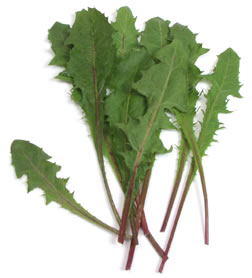
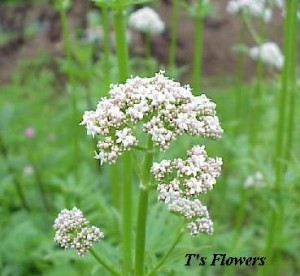
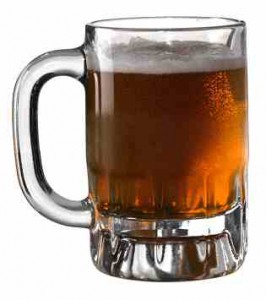
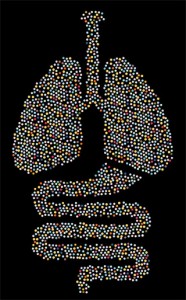
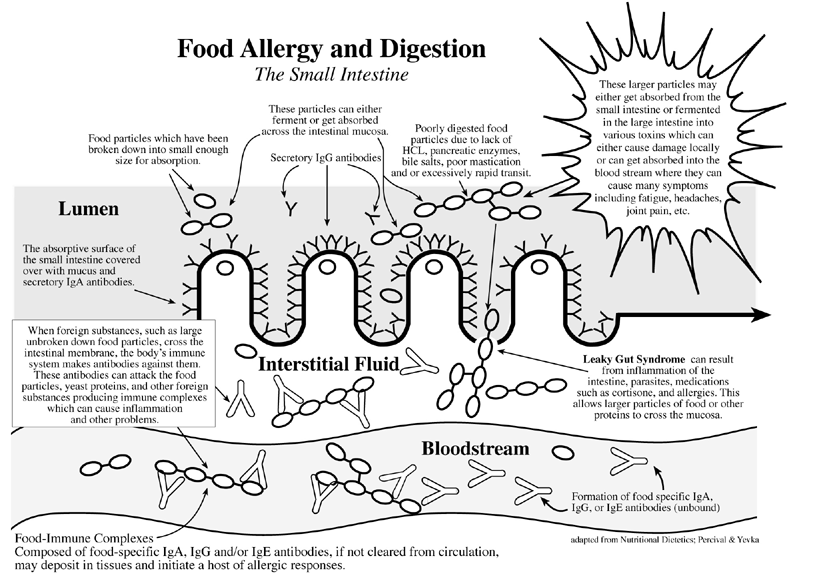

 January 29th 2005 – Acidic Foods, Fermentation and Blood Sugar
January 29th 2005 – Acidic Foods, Fermentation and Blood Sugar